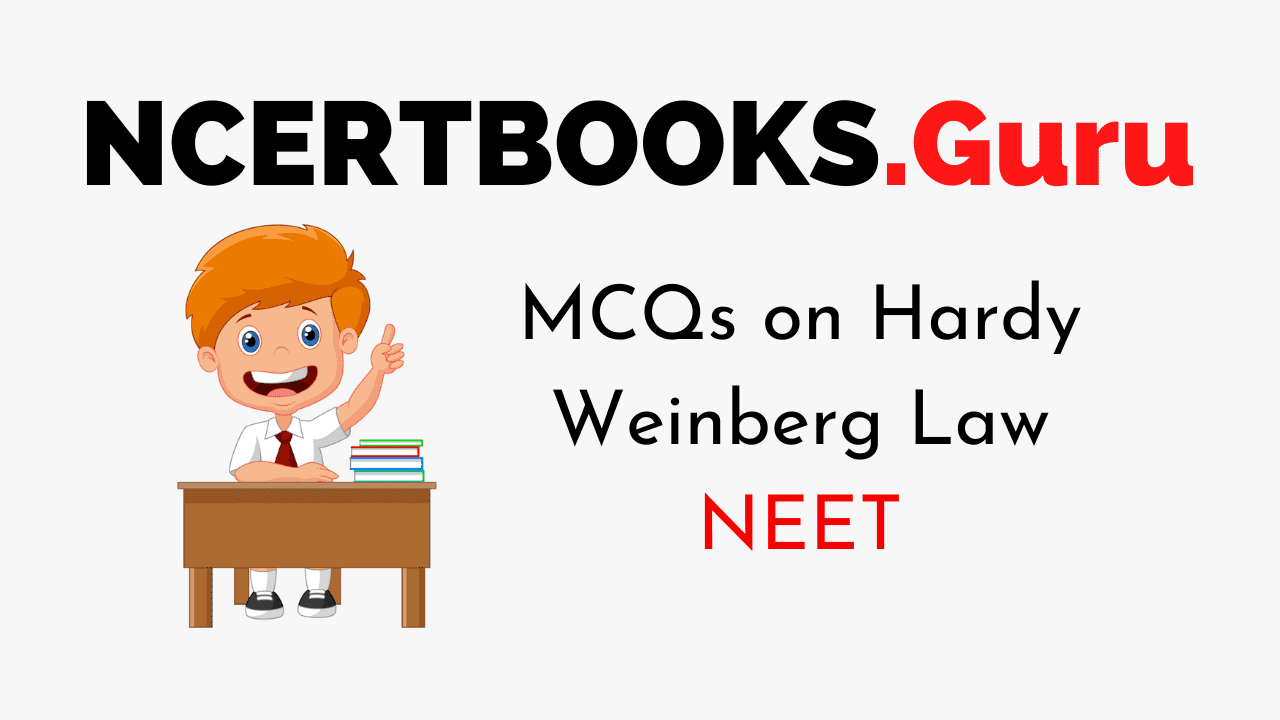NEET Biology is the scoring paper in the medical entrance examination. Here, you will discover the NEET Biology MCQ Questions for all Concepts as per the latest syllabus. Practice more on a regular basis with these NEET Biology objective questions on air pollution and improve your subject knowledge & problem-solving skills along with time management. NEET Biology Hardy Weinberg Law Multiple Choice Questions make you feel confident in answering the question in the exam & increases your scores to high.
MCQs on Hardy Weinberg Law
1. In the Caucasian population of the US, 1 in 2500 babies is affected by a recessive condition – cystic fibrosis. In this population, the frequency of the dominant allele is
(a) 0.02
(b) 0.36
(c) 0.56
(d) 0.98
Answer
Answer: (d)
2. A sampled “a” population has 36% of homozygous recessive genotype (aa). Then the frequency of allele “a” is
(a) 0%
(b) 20%
(c) 60%
(d) 70%
Answer
Answer: (c)
3. 360 out of 1000 individuals in a population have a genotype of AA while 480 have Aa genotype. The rest 160 belong to aa. Frequency of allele A in this population is
(a) 0.7
(b) 0.6
(c) 0.5
(d) 0.4
Answer
Answer: (b)
4. A gene locus has two alleles A and a. If the frequency of dominant allele A is 0.4, then the frequency of homozygous dominant, heterozygous and homozygous recessive individuals in the population is
(a) 0.16(AA); 0.48(Aa); 0.36(aa)
(b) 0.16(AA); 0.24(Aa); 0.36(aa)
(c) 0.16(AA); 0.36(Aa); 0.48(aa)
(d) 0.36(AA); 0.48(Aa); 0.16(aa)
Answer
Answer: (a)
5. What does p2 in the below mentioned Hardy-Weinberg equation indicate?
(p+q)2 = p2 + 2pq + q2
(a) individuals that are heterozygous dominant
(b) individuals having a lethal allele
(c) individuals that are homozygous dominant
(d) individuals that are homozygous recessive
Answer
Answer: (c)
6. 25 individuals in a population are homozygous dominant, then the individuals that are expected to be homozygous recessive are
(a) 100
(b) 75
(c) 50
(d) 25
Answer
Answer: (d)
7. Consider a population of sheep to be in Hardy-Weinberg equilibrium. The allele for black wool(w) has an allele frequency of 0.81 while the allele for white wool(W) has an allele frequency of 0.19. Then the percentage of heterozygous individuals in the population is
(a) 4%
(b) 15%
(c) 31%
(d) 66%
Answer
Answer: (c)
8. This condition is essential for a population to be in the Hardy-weinberg equillirbirum
(a) random mating
(b) no mutations
(c) large population
(d) all of these
Answer
Answer: (d)
9. This statement describes the Hardy-Weinberg law the best
(a) it is impossible to predict expected allele frequencies mathematically
(b) in large populations, dominant alleles become more prevalent
(c) allele frequency changes over a period of time in a large population
(d) mechanism of inheritance in a large population does not change allele frequency
Answer
Answer: (d)
10. This is true of the population which are included in Hardy-Weinberg equilibrium
(a) entities migrate constantly
(b) populations should be limited and small
(c) mating is random
(d) process of natural selection is occurring
Answer
Answer: (c)
